Wingspan 11 m | Length 12 m | |
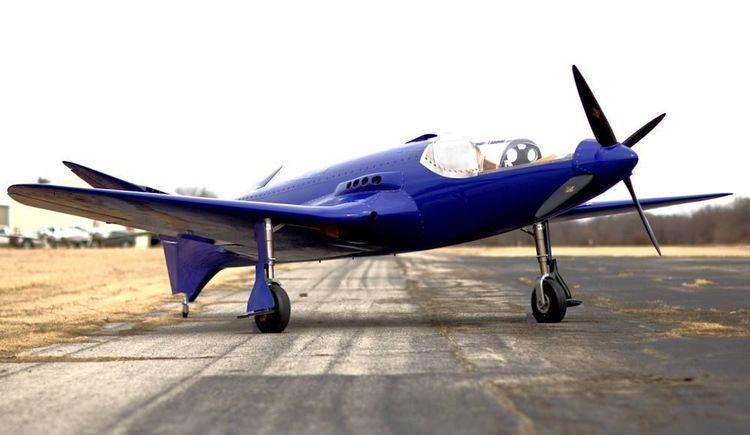 | ||
Bugatti model 100 racer
The Bugatti Model 100 was a purpose built air racer designed to compete in the 1939 Deutsch de la Meurthe Cup Race. The aircraft was not completed by the September 1939 deadline and was put in storage prior to the German invasion of France.
Contents
- Bugatti model 100 racer
- Development
- Design
- Operational history
- Blue Dream reproduction aircraft
- Crash of reproduction aircraft
- Variants
- Specifications Bugatti Model 100
- References
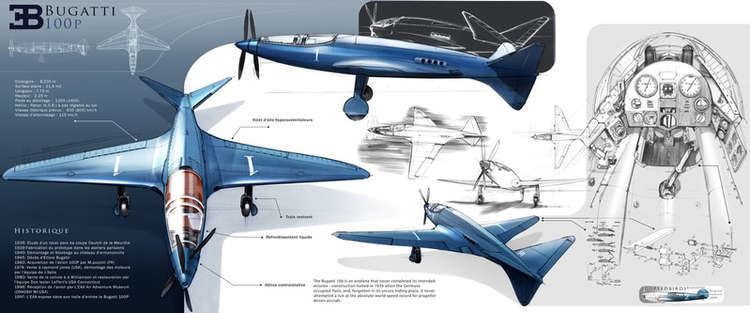
Development
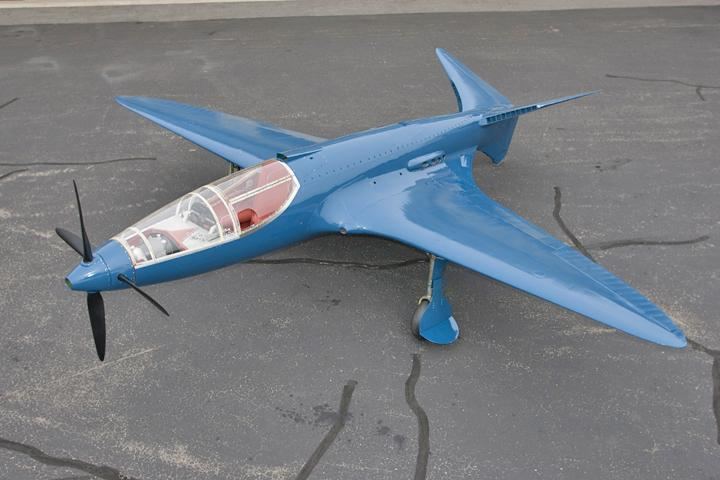
Ettore Bugatti started work in 1938 to design a racer to compete in the Deutsch de la Meurthe Cup Race, using engines sold in his automotive line for co-marketing.
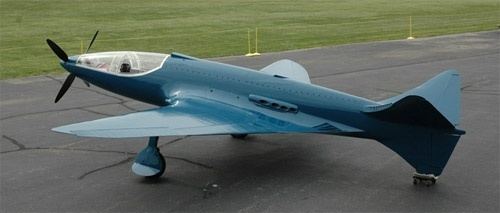
Bugatti's chief engineer was Louis de Monge, with whom Bugatti had worked before. Bugatti was also approached by the French Government to use the technology of the racing aircraft to develop a fighter variant for mass production. The aircraft was the source of five modern patents including the inline engines, V tail mixer controls, and the automatic flap system.
Design
The Model 100 had an unusual inboard mounted twin engine arrangement driving forward mounted contra-rotating propellers through driveshafts.
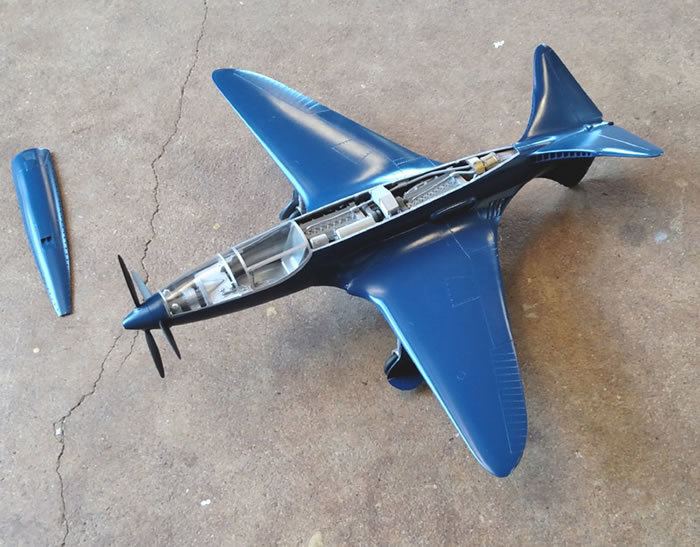
The aircraft also featured a 120 degree V-tail arrangement and retractable landing gear. The construction was mostly of wood, with sandwiched layers of balsa and hardwoods, including tulipwood stringers covered with doped fabric.
Operational history
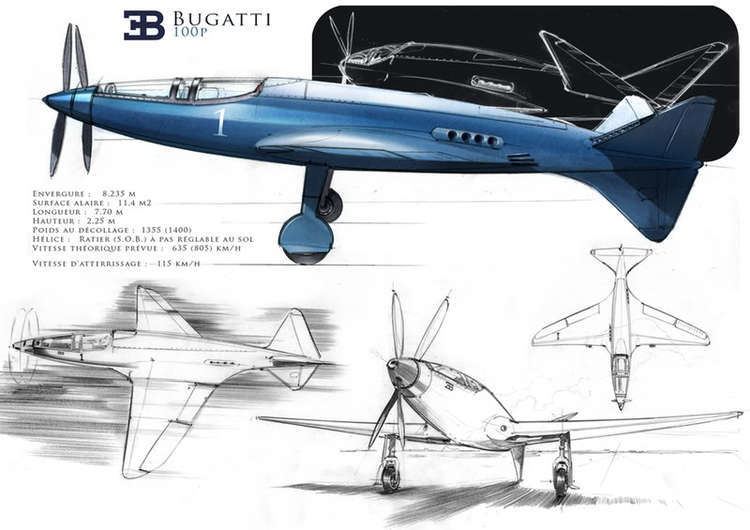
With the outbreak of WWII and the imminent fall of Paris, Bugatti had the aircraft disassembled and hidden on his estate. Bugatti died in 1947, having never resumed work on it.

The aircraft remained in storage throughout World War II. It was sold several times, and its twin Bugatti 50P engines were removed for automotive restorations. In 1971 a restoration effort was started. The aircraft was stored by the National Museum of the United States Air Force, then transferred to the EAA Airventure Museum collection where restoration was completed, and it remains on static display.
Blue Dream reproduction aircraft
A full scale flying reproduction was constructed by a team of enthusiasts, most notably Scotty Wilson and John Lawson. Modern materials were used within reason, allowing for cost and safety. The use of magnesium, named in the original design to save weight, was rejected due to its flammability and cost. A composite wood (DuraKore) was used in place of the original tulipwood, and glued in place with modern epoxy. The doped fabric was replaced with fiberglass.
The partially completed aircraft was displayed at the 2011 EAA Airventure airshow.
On July 4, 2015 the reproduction aircraft, named Blue Dream taxied under the power of its two Suzuki Hayabusa engines at Tulsa, Oklahoma.
On August 19, 2015 the team announced that they had completed their first successful test flight of the replica aircraft. Its handling characteristics were "as expected" by the team, and it achieved a maximum altitude of 100 feet (30 meters) AGL at a maximum speed of 110 knots (200 km/h). On landing though the plane "floated much more than anticipated" and landed significantly farther down the runway than intended. Because of this the wheel brakes needed to be applied to keep from overrunning the end of the runway. Subsequently the right brake failed, sending the aircraft into the muddy soil adjacent to the runway, tipping it up in its nose and generating a prop and spinner strike. In October it made a successful flight.
Crash of reproduction aircraft
On August 6, 2016 the reproduction aircraft crashed during its third test flight near Clinton-Sherman Air Force Base in Oklahoma, killing the pilot Scotty Wilson.
Less than a minute into its third, and last, flight, the aircraft banked sharply to the left and dived into a nearby field. The plane went in nose-first, instantly killing the pilot. The aircraft was destroyed in the crash and subsequent fire. A chase helicopter landed at the site of the crash, but was unable to render assistance.
It had been planned to retire the aircraft after this flight to an unnamed museum in the United Kingdom. The crash is being investigated by the NTSB and the FAA.
Variants
The Bugatti Model 110P was a proposed militarized pursuit version of the model 100 racer. It never materialised.
Specifications (Bugatti Model 100)
Data from EAA
General characteristics
Performance
